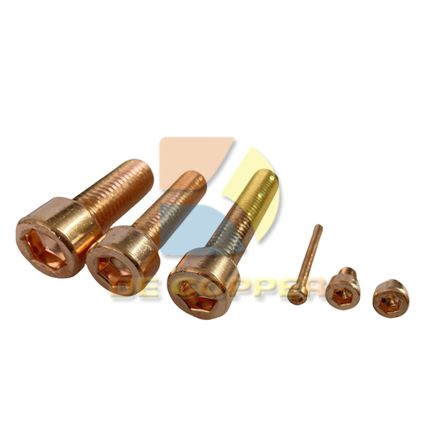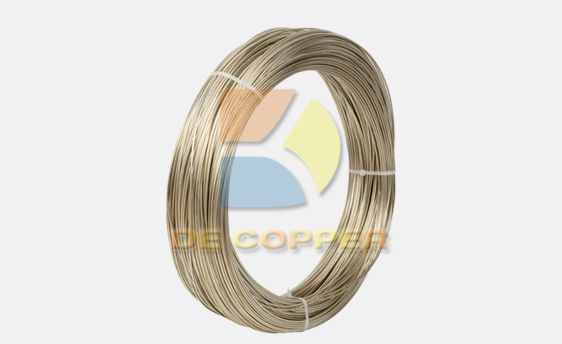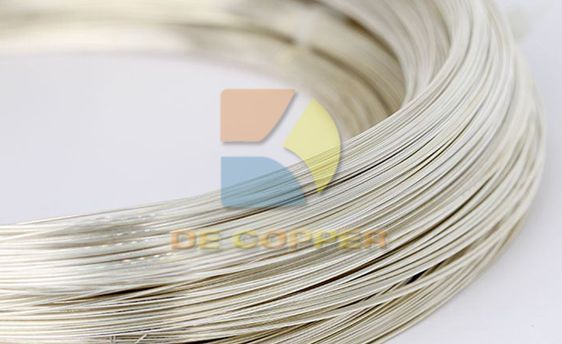close
Choose Your Site
Global
Social Media
Views: 0 Author: Site Editor Publish Time: 2025-07-11 Origin: Site

Ever wondered why bronze holds an edge better than brass? The difference in their properties is key.In this article, we'll explore how bronze's unique composition allows it to maintain an edge, unlike brass. You'll learn about the role of hardness, applications, and why bronze is ideal for tools and weapons.
Bronze and brass are both copper alloys, but they differ significantly in their composition. Bronze primarily consists of copper and tin, while brass is made of copper and zinc. The exact proportions of these metals can vary, producing different alloys.
● Bronze: Typically consists of about 88-95% copper and 5-12% tin. Variations may include the addition of other elements such as aluminum, phosphorus, or silicon, resulting in alloys like phosphor bronze or aluminum bronze.
● Brass: Contains 55-95% copper, with the remainder being zinc. Some types of brass may contain other metals, such as lead, to improve machinability.
Material | Primary Components | Key Variations |
Bronze | Copper (88-95%), Tin (5-12%) | |
Brass | Copper (55-95%), Zinc (5-45%) | Leaded brass, Naval brass |
Both bronze and brass offer several important properties that make them valuable in different applications. Here's a comparison of their characteristics:
● Bronze: Known for its high corrosion resistance, especially in marine environments. It is strong, durable, and resistant to wear and tear. Bronze's properties make it ideal for heavy-duty applications.
● Brass: Brass is more malleable and has good corrosion resistance but is less durable compared to bronze. It's often used for decorative purposes and in applications requiring high malleability, such as in musical instruments or plumbing fixtures.
Property | Bronze | Brass |
Corrosion Resistance | High in marine environments | Moderate, prone to corrosion in certain conditions |
Durability | Highly durable and wear-resistant | Less durable than bronze |
Malleability | Moderate | High, very malleable |
Hardness refers to a material's ability to resist deformation, scratches, and wear. It is a crucial property for maintaining sharp edges in tools and weapons. Harder materials can resist wear and keep their sharpness longer, making them ideal for applications like cutting tools, knives, and swords.
The hardness of an alloy is typically measured using scales such as the Rockwell or Brinell hardness scales. The higher the hardness, the better the material can retain an edge under stress.
Bronze is typically harder than brass, which is why it excels in applications where edge retention is critical. The addition of tin to copper in bronze increases its hardness, making it more resistant to wear and impact. On the other hand, brass, with its higher zinc content, is softer and prone to dulling faster, which limits its ability to hold a sharp edge.
Material | Hardness | Edge Retention |
Bronze | Higher (typically 90-120 HB) | Excellent edge retention in tools |
Brass | Lower (typically 50-75 HB) | Poor edge retention, suitable for non-edge applications |

Tin is a critical element in bronze, significantly enhancing its hardness and strength. This makes bronze resistant to wear and able to maintain sharp edges over time. The alloy's ability to resist abrasion is one of the reasons it has been used for making tools and weapons throughout history.
Bronze's ability to hold an edge has made it ideal for a variety of applications, especially in tools and weaponry. Historically, bronze was used for making swords, knives, and axes, offering superior performance in battle. Today, bronze is still used in the manufacturing of high-performance tools, bearings, and components for industrial applications.
Application | Usage of Bronze |
Weapons | Swords, knives, axes |
Tools | Cutting tools, industrial machinery |
Bearings | Heavy-duty industrial use |
Zinc, a key component of brass, makes the alloy softer compared to bronze. This softness makes brass unsuitable for applications requiring edge retention, as it loses its sharpness quickly. While brass is excellent for decorative items, it doesn't have the durability required for tools that maintain an edge.
Brass is often used in applications where edge retention is not a priority, such as in musical instruments, decorative items, and plumbing. Conversely, bronze is used for tools, weapons, and other applications that require strength and durability.
Material | Primary Use | Edge Retention |
Bronze | Tools, weapons | Excellent for edge retention |
Brass | Decor, plumbing | Poor edge retention |

Bronze is ideal for tools, weapons, and machinery that experience heavy wear. Its superior hardness and edge retention make it the go-to choice for these applications, providing durability and performance.
Brass, being more malleable, is better suited for applications where hardness isn't as important, such as in decorative items, fittings, and electrical components.
Use Case | Material | Reason |
Tools and weapons | Bronze | Requires edge retention and durability |
Decorative items | Brass | Malleable and easy to shape |
The alloy's overall composition plays a key role in determining its hardness and ability to hold an edge. More elements like tin or phosphorus can increase an alloy's resistance to wear.
Heat treatment processes such as tempering can further enhance an alloy's hardness, thereby improving edge retention.
Proper care, including sharpening and cleaning, is essential for preserving the edge of tools made from bronze and brass. Even the best alloys require regular maintenance to maintain performance.
Method | Impact on Edge Retention |
Heat Treatment | Improves hardness and durability |
Regular Maintenance | Preserves sharpness and extends life |
Bronze's higher hardness makes it ideal for maintaining a sharp edge, unlike brass. This property allows bronze to perform better in tools and weapons. When choosing alloys for applications requiring edge retention, it's important to consider bronze's superior hardness over brass for durability and performance.
A: Yes, bronze is stronger than brass for edge retention due to its higher hardness, which helps it maintain sharpness longer in tools and weapons.
A: Brass can be hardened to some extent, but it still doesn't achieve the same level of edge retention as bronze due to its inherent softness.
A: Industries such as toolmaking, weaponry, and machinery manufacturing rely on bronze for its superior edge retention in high-performance applications.